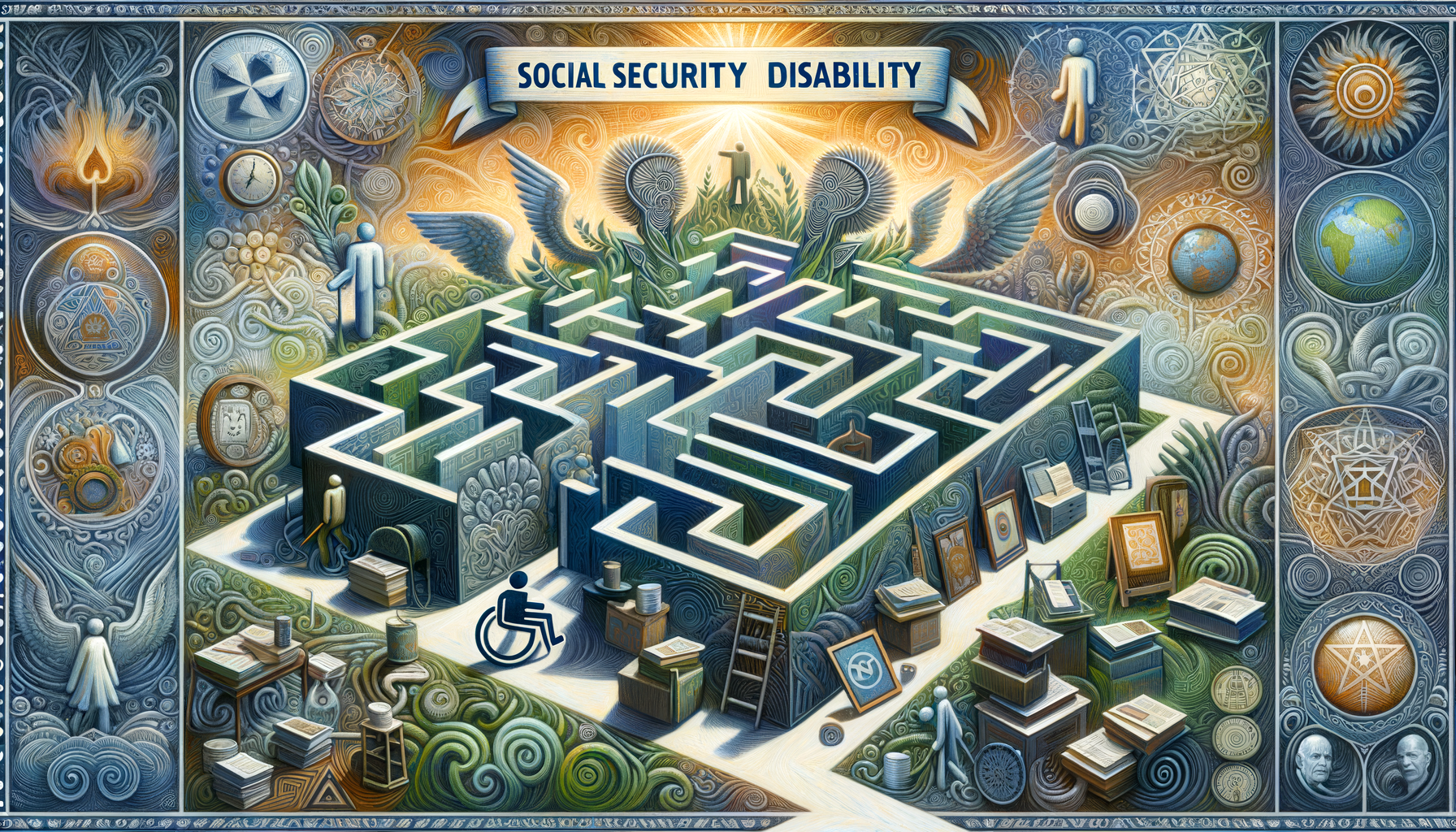Understanding the Basics of Social Security Disability Benefits
Social Security Disability Benefits (SSDI) are a vital source of financial support for individuals who are unable to work due to a disabling condition. The program is designed to provide a safety net for those who have contributed to the Social Security system through their payroll taxes. The eligibility criteria for SSDI are stringent, requiring applicants to prove that their disability is severe enough to prevent them from engaging in substantial gainful activity.
To qualify for SSDI, applicants must have earned a certain number of work credits, which are accumulated based on their earnings history. Generally, younger individuals need fewer credits to qualify than older applicants. The Social Security Administration (SSA) uses a specific formula to calculate these credits, ensuring that only those who have made significant contributions to the system are eligible for benefits.
Once eligibility is established, the SSA evaluates the severity of the applicant’s condition. This involves a thorough review of medical records and other evidence to determine if the disability meets the criteria outlined in the SSA’s Blue Book, a comprehensive guide listing various impairments and their required severity levels. This process ensures that benefits are reserved for those with genuine and debilitating conditions.
The Application Process: Navigating the Paperwork
Applying for Social Security Disability Benefits can be a daunting task, filled with extensive paperwork and detailed documentation requirements. The application process begins with the completion of several forms, including the Adult Disability Report and the Disability Benefit Application. These forms require detailed information about the applicant’s medical history, work history, and the nature of their disability.
Applicants must also provide comprehensive medical documentation to support their claim. This includes medical records, test results, and statements from healthcare providers. The SSA may also request additional information or schedule a consultative examination to gather further evidence regarding the applicant’s condition.
The complexity of the application process often leads to delays and frustration for applicants. Many find it beneficial to seek assistance from a disability attorney or advocate, who can guide them through the process and help ensure that all necessary documentation is submitted accurately and promptly. This professional guidance can significantly increase the likelihood of a successful application.
Common Challenges and How to Overcome Them
One of the most significant challenges faced by applicants is the high rate of initial denials. According to the SSA, approximately 65% of initial applications are denied. The reasons for denial can vary, but common issues include insufficient medical evidence, failure to meet the SSA’s definition of disability, or errors in the application.
To improve the chances of approval, applicants should ensure that their medical records are comprehensive and up-to-date. It’s essential to maintain regular contact with healthcare providers and obtain detailed statements that clearly outline the limitations imposed by the disability. Additionally, applicants should carefully review the SSA’s Blue Book to understand the specific criteria for their condition and ensure that their application addresses these requirements.
In cases where an application is denied, applicants have the right to appeal the decision. The appeals process involves several stages, including reconsideration, a hearing before an administrative law judge, and further appeals to the Appeals Council or federal court if necessary. Persistence and thorough preparation are key to navigating these challenges successfully.
The Appeals Process: Seeking a Fair Evaluation
If an initial application for SSDI is denied, the appeals process offers applicants a chance to have their case reevaluated. The first step in this process is reconsideration, where a new examiner reviews the application and any additional evidence provided by the applicant. This stage is crucial, as it allows applicants to address any deficiencies in their original submission.
Should the reconsideration result in another denial, the next step is a hearing before an administrative law judge (ALJ). During the hearing, applicants have the opportunity to present their case in person and provide testimony regarding the impact of their disability on their daily life. The ALJ will also consider any new evidence or documentation submitted by the applicant.
The appeals process can be lengthy and complex, often taking several months or even years to reach a resolution. However, it is an essential part of ensuring that applicants receive a fair evaluation of their claim. Many applicants find success at the hearing stage, where they can present their case more comprehensively than in the initial application.
Receiving Benefits: What to Expect After Approval
Once an application for Social Security Disability Benefits is approved, recipients can expect to receive monthly payments that help cover living expenses. The amount of the benefit is determined by the recipient’s earnings history and the number of work credits they have accumulated. Payments typically begin six months after the onset of the disability, with back payments issued for the period between the application date and approval.
In addition to monthly payments, SSDI recipients may also qualify for Medicare coverage after a 24-month waiting period. This provides essential healthcare support, helping recipients manage medical expenses related to their disability. Some individuals may also qualify for additional assistance through programs such as Supplemental Security Income (SSI), which provides financial support to those with limited income and resources.
It’s important for recipients to understand their responsibilities while receiving benefits. This includes promptly reporting any changes in their condition, work status, or other factors that could affect their eligibility. Regular reviews by the SSA ensure that recipients continue to meet the program’s requirements, maintaining the integrity and sustainability of the Social Security system.




Leave a Reply